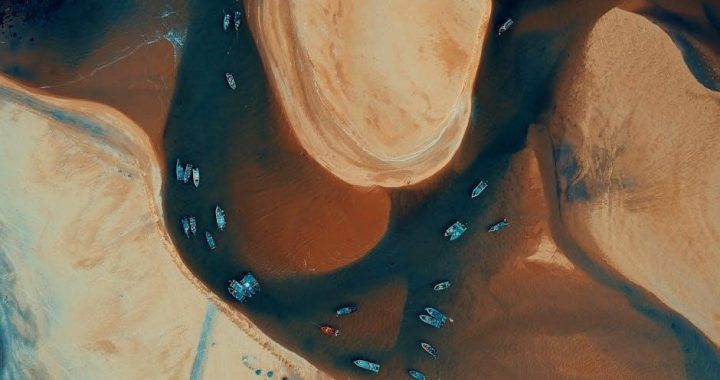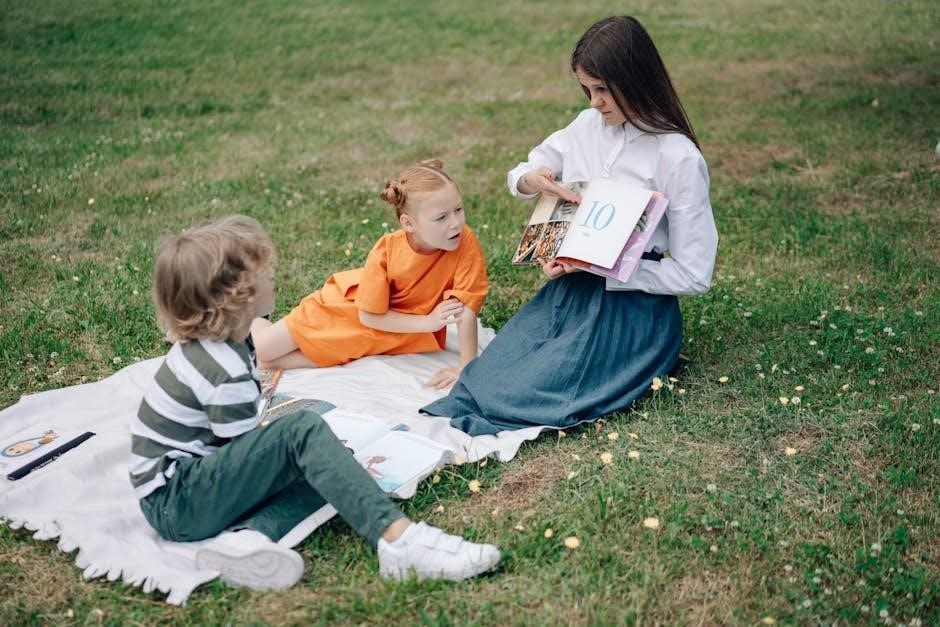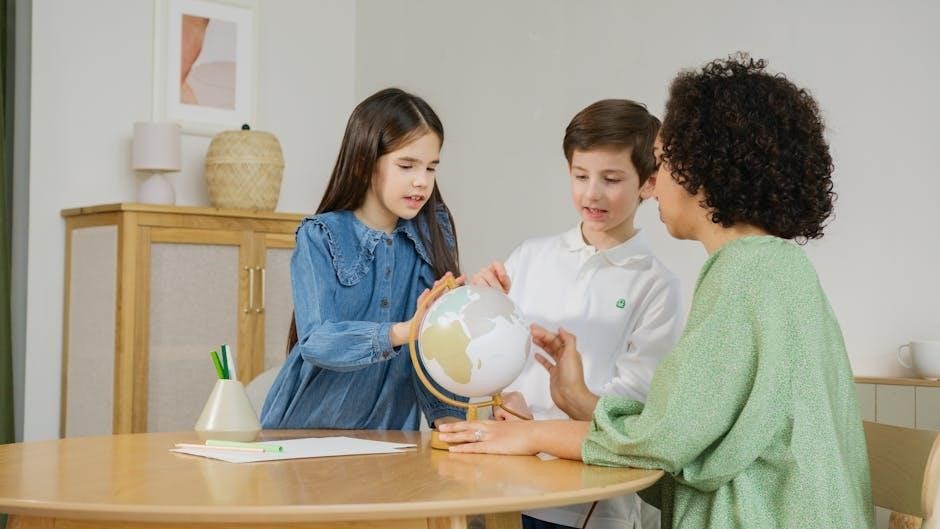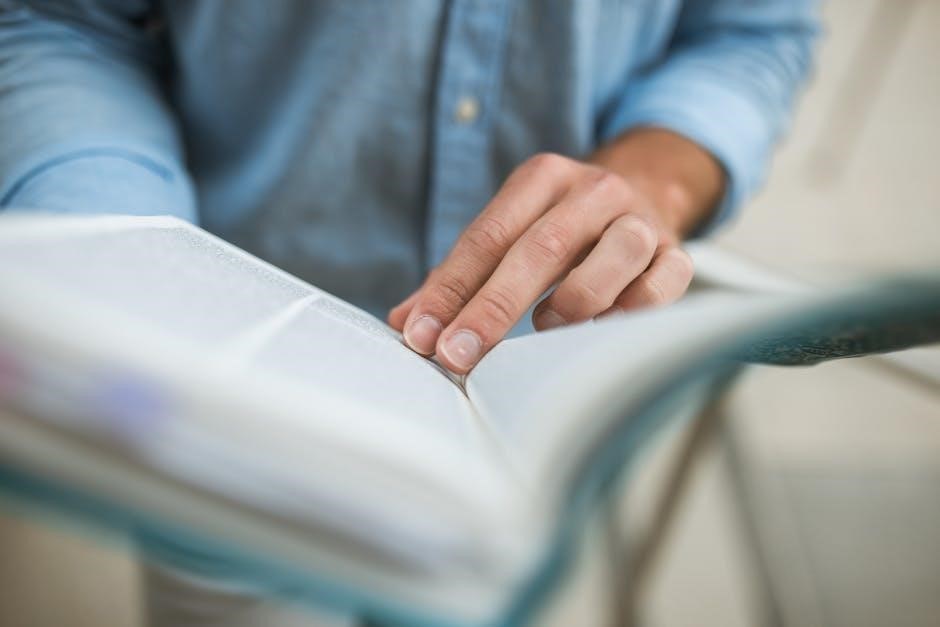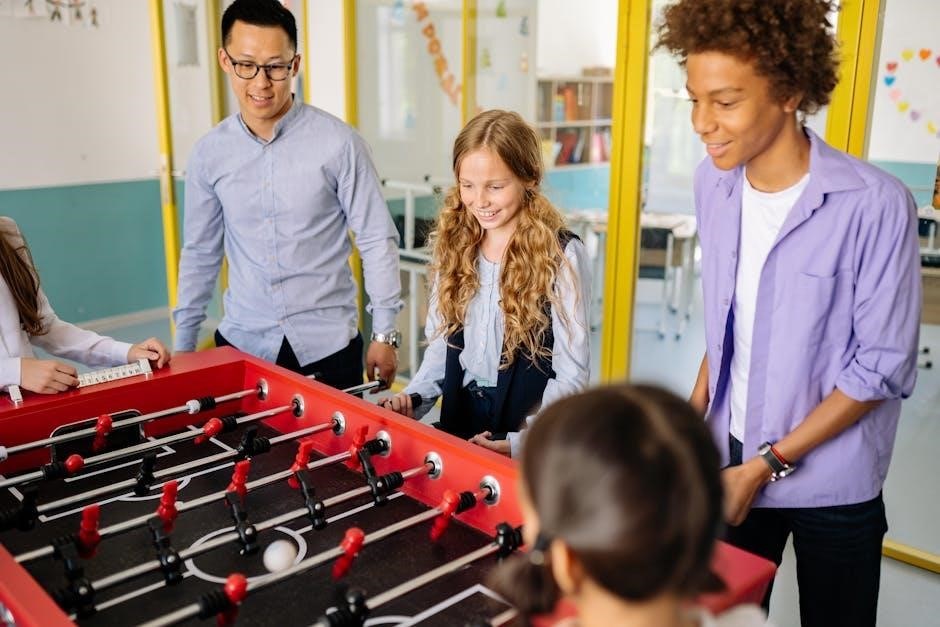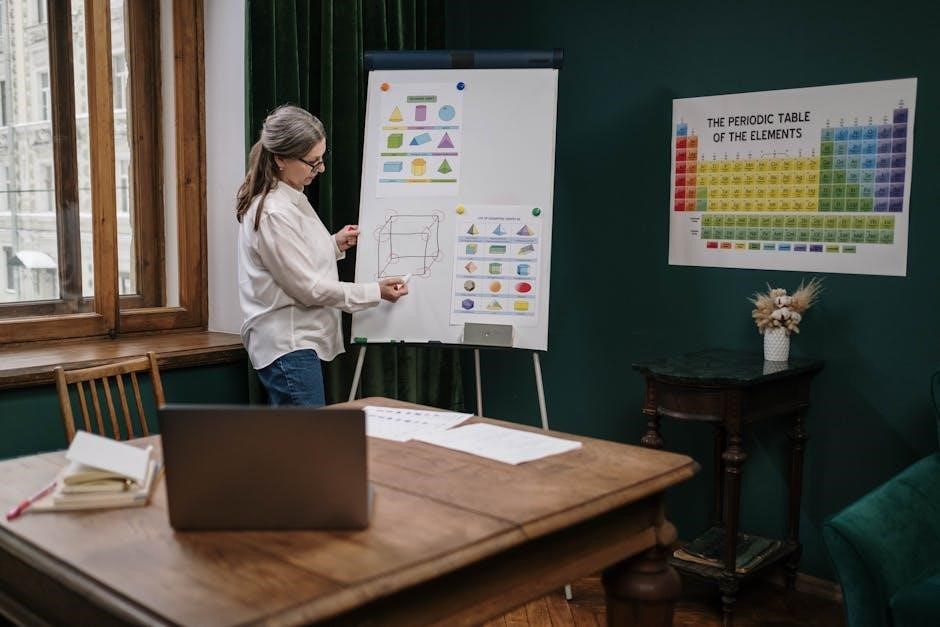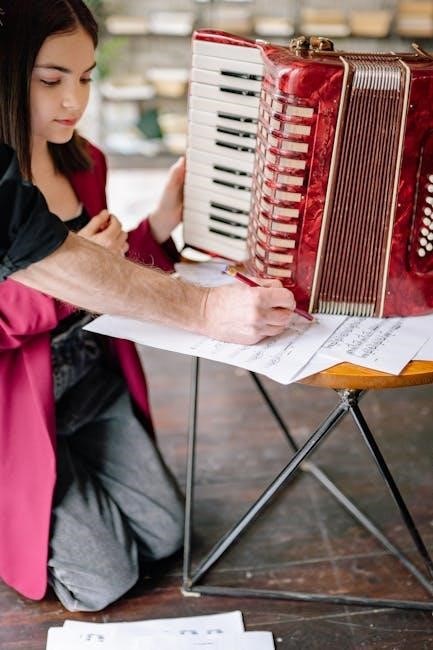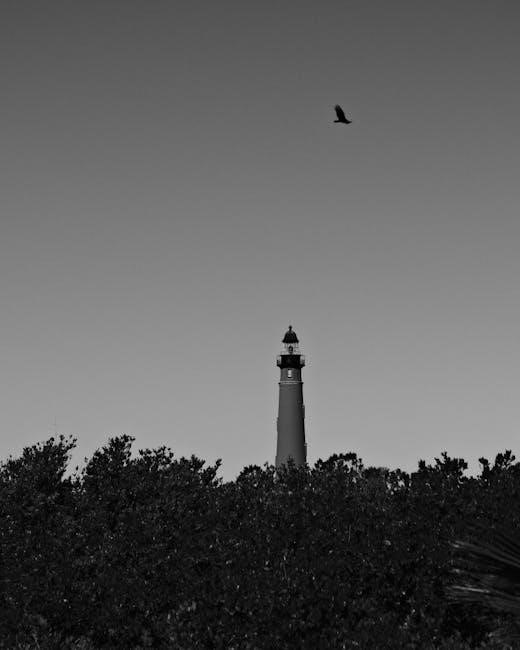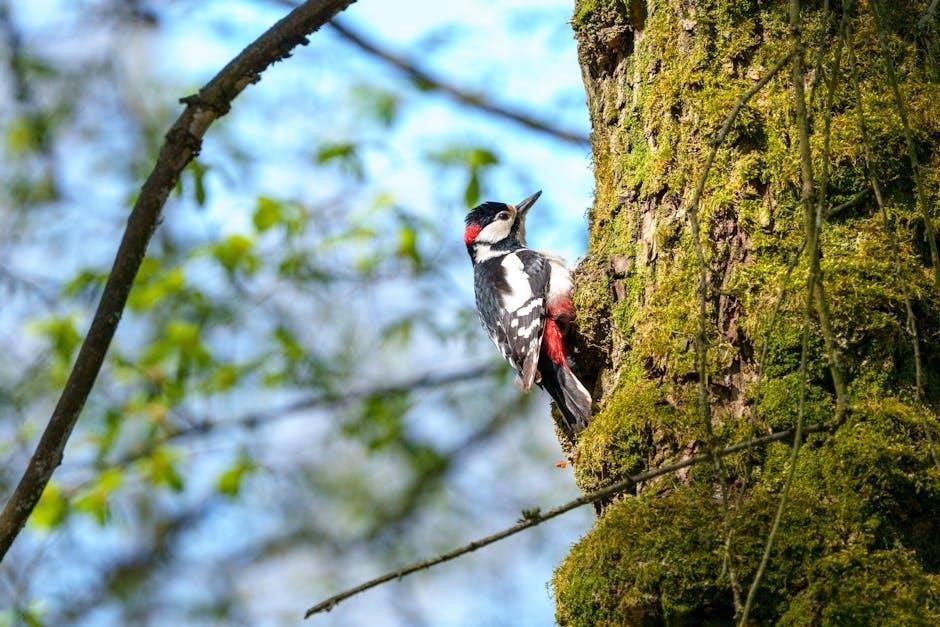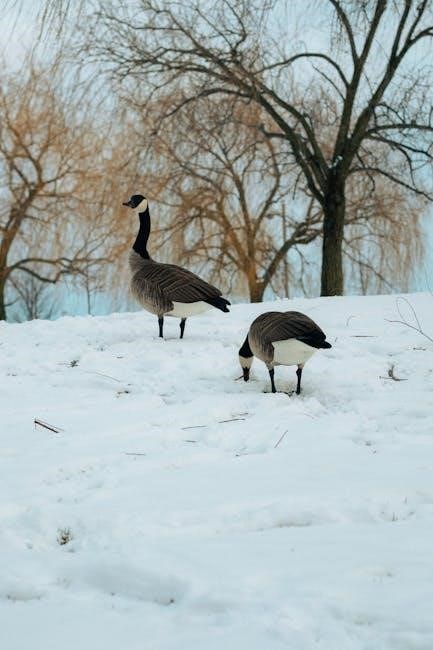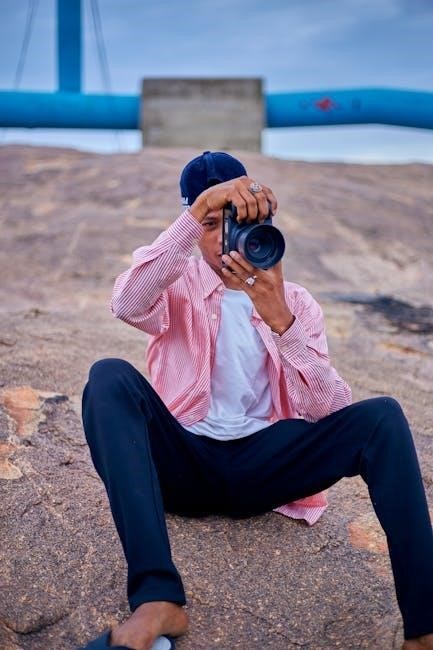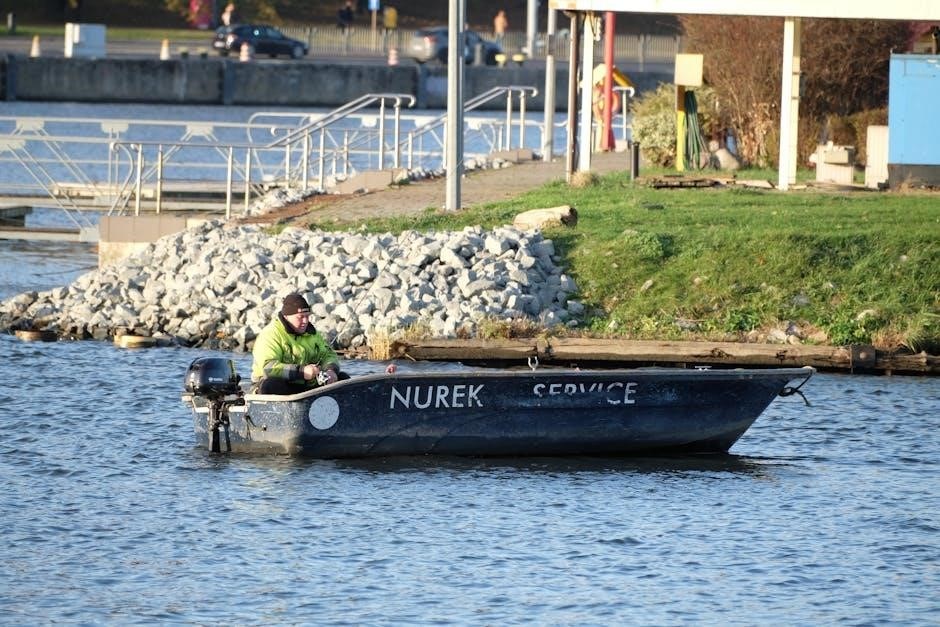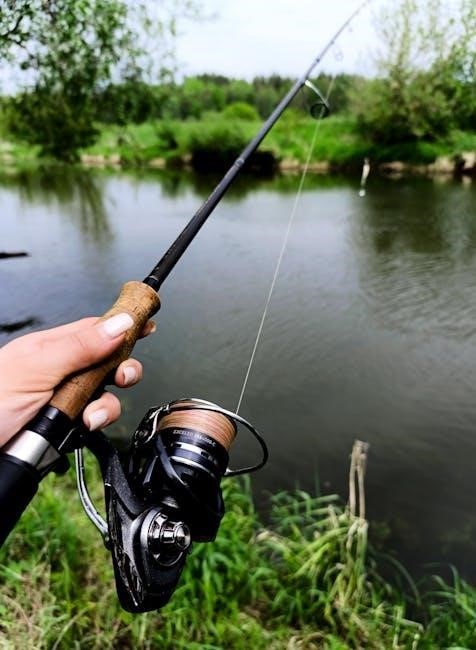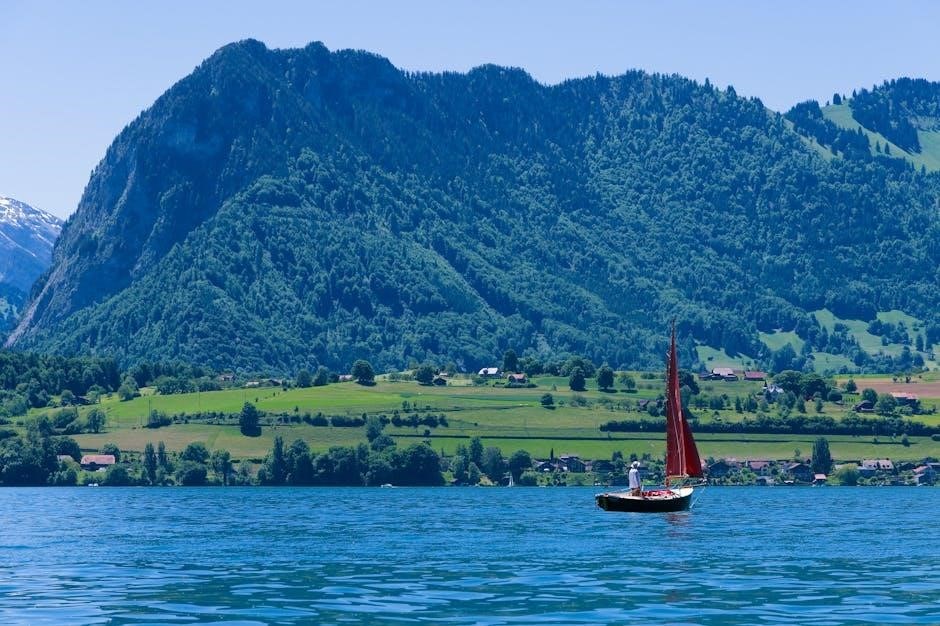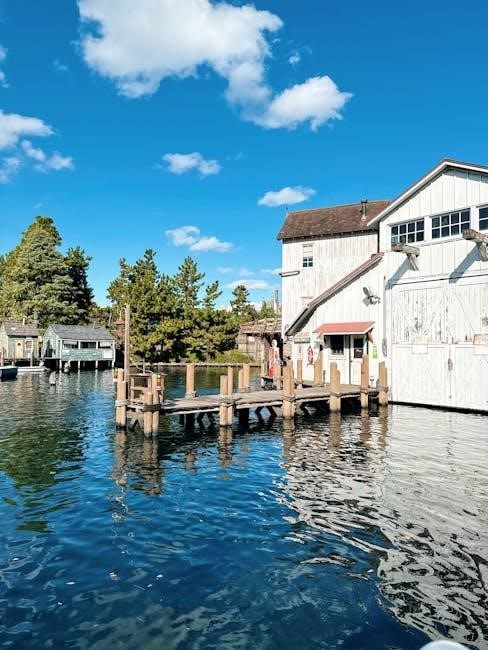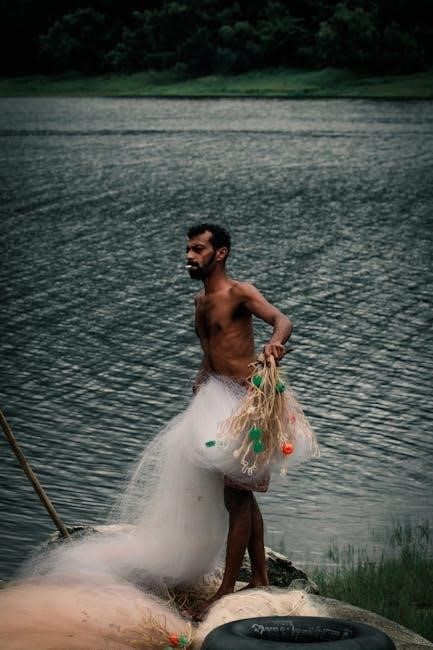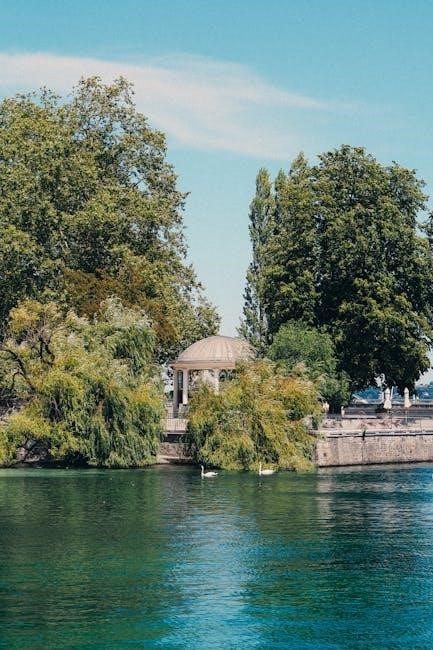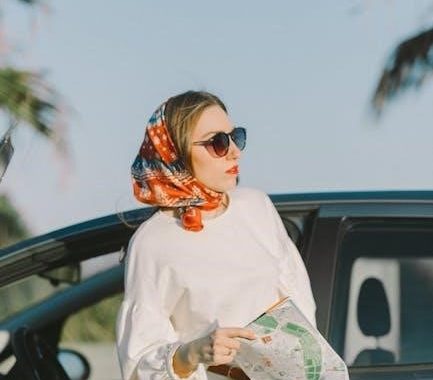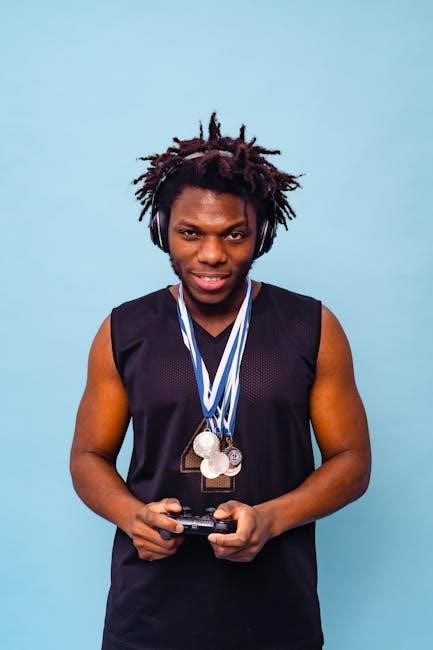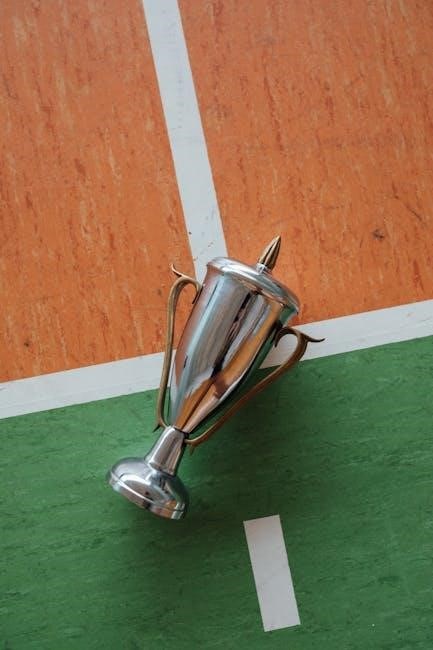The Columbia River is renowned for its exceptional walleye fishing opportunities‚ attracting anglers from across the country. Experienced guides offer invaluable local expertise‚ ensuring successful and memorable fishing trips. This section explores the benefits of hiring a guide‚ their specialized techniques‚ and how they enhance your fishing experience on the Columbia River.
Overview of the Columbia River as a Walleye Fishing Destination
The Columbia River is a premier destination for walleye fishing‚ known for its abundant population and trophy-sized catches. Its diverse habitats‚ from deep pools to shallow riffles‚ provide ideal conditions for walleye. The river’s accessibility and scenic beauty make it a favorite among anglers. With consistent fishing opportunities year-round‚ the Columbia River offers an unforgettable experience for both novice and experienced anglers seeking to land prized walleye.
Importance of Hiring a Fishing Guide
Hiring a fishing guide is crucial for maximizing your walleye fishing success on the Columbia River. Guides possess extensive local knowledge of hotspots‚ seasonal patterns‚ and effective techniques. They ensure you’re using the right gear and strategies‚ saving time and increasing your chances of landing trophy walleye. Guides also handle logistics‚ allowing you to focus on fishing. Whether you’re a novice or experienced angler‚ a guide enhances your experience‚ providing insights and tips for a memorable and productive trip.
Best Fishing Spots on the Columbia River for Walleye
The Columbia River offers exceptional walleye fishing opportunities‚ with popular spots like the Dalles‚ John Day‚ and Bonneville pools. These areas are known for abundant fish populations and ideal habitats‚ making them hotspots for anglers seeking trophy walleye.
Hot Spots for Walleye Fishing
The Columbia River is home to numerous hot spots for walleye fishing‚ with the Dalles Dam and John Day Pool being particularly productive. The mouth of the Kootenay River and areas near Bonneville Dam also attract anglers due to their abundant walleye populations. Gravel bars‚ rocky shorelines‚ and deep pools are favored habitats. Anglers often find success using jigs or bottom bouncers near these structures. Night fishing in these areas can yield impressive catches‚ especially during peak seasons. Always check local regulations before heading out to ensure a lawful and enjoyable experience.
Seasonal Variations in Fishing Locations
Walleye fishing locations on the Columbia River vary significantly with the seasons. During spring‚ walleye tend to congregate near shallow gravel bars and rocky shorelines for spawning. Summer months see them moving to deeper pools and structured areas. In fall‚ they often migrate upstream‚ while winter brings them to slower-moving water near dams. Understanding these seasonal shifts is crucial for targeting walleye effectively. Guides often adjust strategies based on water temperature and walleye migration patterns‚ ensuring anglers maximize their chances of success throughout the year.
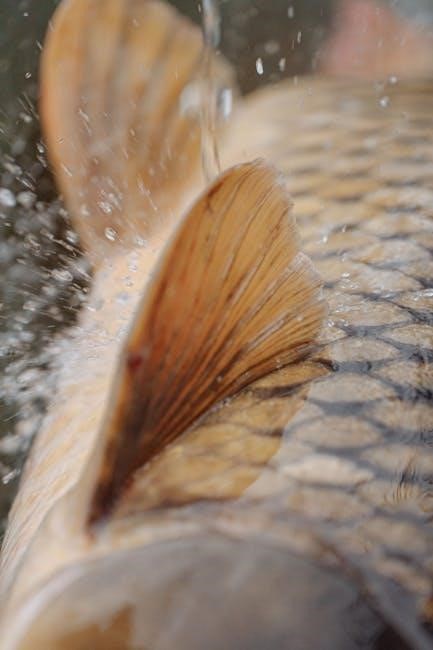
Techniques for Catching Walleye
Effective walleye fishing on the Columbia River involves using bottom bouncers‚ jigs‚ and trolling techniques. Live bait and precise presentations are key to attracting these elusive fish.
Using Bottom Bouncers and Worm Harnesses
Bottom bouncers and worm harnesses are highly effective for catching walleye on the Columbia River. These rigs allow anglers to present bait near the riverbed‚ where walleye often feed. The bottom bouncer acts as a weight‚ keeping the bait suspended above the substrate‚ while the worm harness‚ typically tipped with live bait like nightcrawlers‚ attracts walleye with its natural movement. This setup is particularly successful in the river’s strong current‚ as it maintains the optimal depth and presentation. Adjusting the weight and speed ensures the rig hovers just above the bottom‚ mimicking prey movement and enticing strikes. This method is a favorite among Columbia River anglers for its reliability and effectiveness in various water conditions.
Effective Use of Jigs and Trolling Techniques
Jigs and trolling techniques are highly effective for targeting walleye in the Columbia River. Jigs‚ such as curly tail or swimbaits‚ mimic baitfish and crayfish‚ attracting walleye in rocky structures or drop-offs. Trolling allows anglers to cover large areas‚ maintaining a steady presentation that entices strikes. Varying jig sizes‚ colors‚ and retrieval speeds can enhance success. Trolling at depths between 10-30 feet‚ especially near submerged reefs or weed beds‚ is particularly productive. Combining these methods with precise boat control ensures a higher chance of landing trophy walleye in the Columbia River.
Live Bait Strategies for Walleye
Live bait is a proven method for catching walleye in the Columbia River. Nightcrawlers‚ minnows‚ and leeches are among the most effective choices. Rigging live bait on a worm harness or jighead allows for precise presentation. Walleye often strike live bait near structure‚ such as rocky drop-offs or weed beds. Varying the size and action of the bait can entice more strikes. Using live bait in conjunction with bottom bouncers or drift rigs enhances effectiveness‚ especially in deeper waters. This approach ensures a natural presentation that walleye find irresistible.
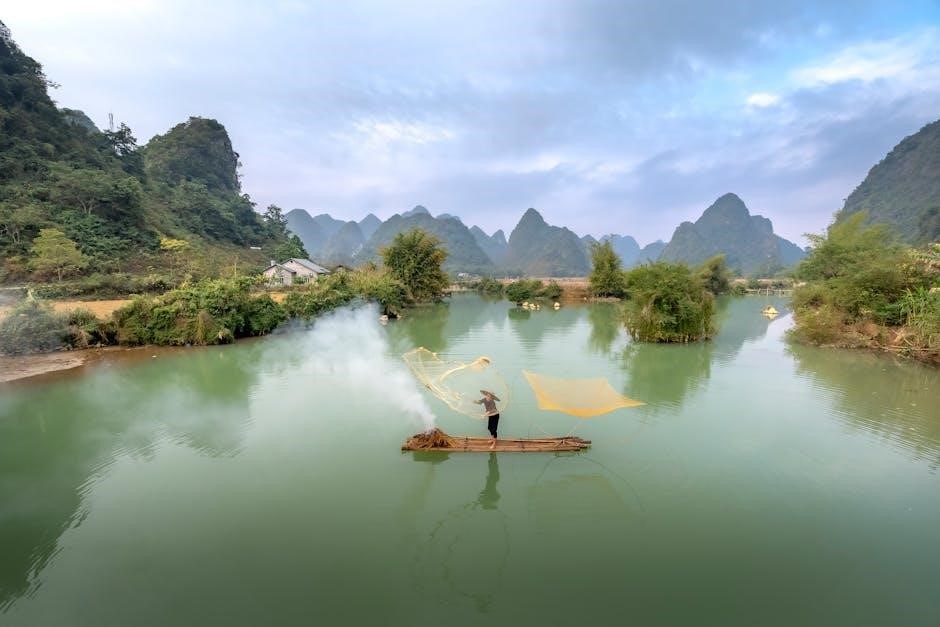
Regulations and Permits
Fishing on the Columbia River requires adherence to specific regulations‚ including bag limits and size restrictions. Ensure you obtain a valid fishing license and understand local permits.
Fishing Regulations in the Columbia River
Fishing regulations on the Columbia River are essential to ensure sustainable walleye populations and maintain a healthy ecosystem. Anglers must adhere to specific bag limits‚ size restrictions‚ and seasonal closures. The river is managed jointly by state and federal agencies‚ which establish rules to protect both the fish and the environment. It is crucial to obtain a valid fishing license and familiarize yourself with local regulations before your trip. Failure to comply can result in fines or other penalties‚ so always check for updates before casting your line.
Obtaining the Necessary Permits
Before fishing for walleye on the Columbia River‚ obtaining the proper permits is essential. A valid fishing license is required‚ which can be purchased from state wildlife agencies or authorized vendors. Ensure you review and comply with all local‚ state‚ and tribal regulations‚ as requirements may vary. Additionally‚ check for any special permits needed for specific fishing areas or methods. Failure to obtain the necessary permits can result in fines or legal action. Always verify the most recent regulations before your fishing trip to avoid any issues.
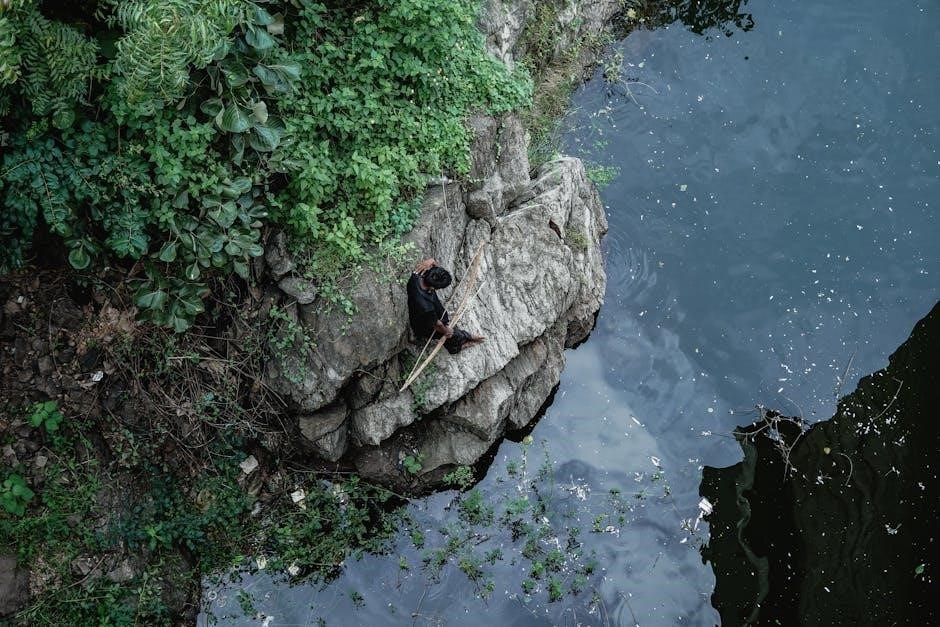
Tackle and Gear Recommendations
Essential tackle includes medium to heavy action rods‚ spinning or baitcasting reels‚ and a variety of lures such as jigs‚ bottom bouncers‚ and worm harnesses. Live bait like nightcrawlers is highly effective. Ensure your gear is durable and suitable for the river’s conditions to maximize your chances of landing trophy walleye. Proper tackle setup is crucial for a successful fishing experience on the Columbia River.
Best Rods and Reels for Walleye Fishing
For walleye fishing on the Columbia River‚ medium to heavy action rods (6-8 feet) with a sensitive tip are ideal. Pair these with a reliable baitcasting or spinning reel featuring a smooth drag system. High-quality reels with a good gear ratio ensure better control when reeling in larger walleye. A sturdy rod-and-reel combo is essential for handling the river’s strong currents and aggressive bites. Proper gear setup is key to landing trophy-sized walleye effectively and enjoying a successful fishing experience.
Recommended Lures and Baits
When fishing for walleye on the Columbia River‚ jigs‚ spinners‚ and crankbaits are highly effective lures. Jigs tipped with live bait like nightcrawlers or minnows attract walleye‚ while spinner rigs mimic injured baitfish. Crankbaits in natural colors work well for deeper waters. Live bait‚ such as leeches or worms‚ is also a popular choice‚ as walleye are drawn to their scent and movement. Using the right combination of lures and baits increases your chances of landing a trophy walleye‚ especially when presentation and retrieval speed are adjusted to match the river’s conditions.
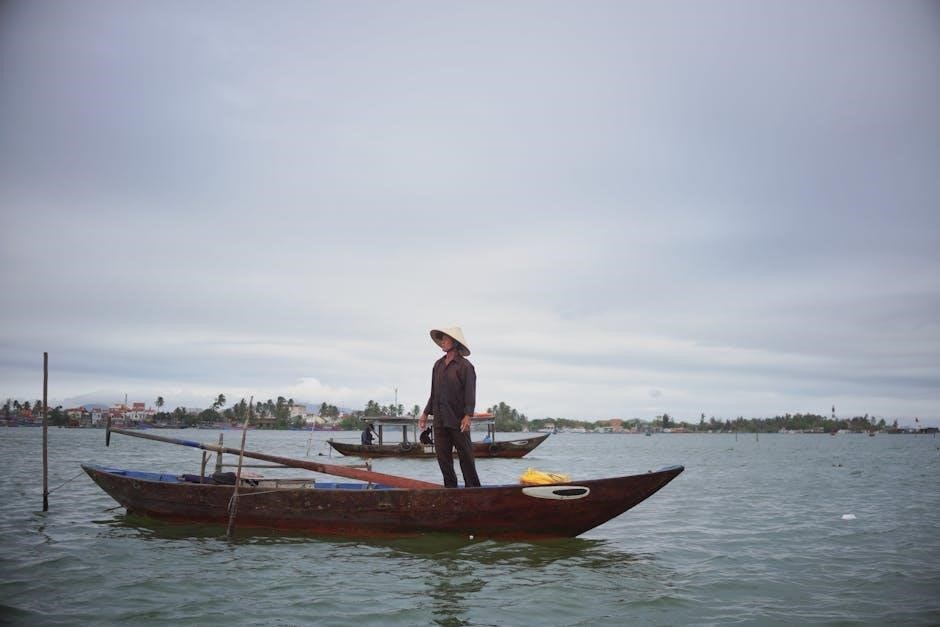
Walleye Behavior and Habitat
Walleye are highly migratory‚ schooling fish that thrive in the Columbia River’s diverse habitats. They prefer gravel bars‚ deep pools‚ and areas with abundant baitfish‚ making them a prime target for anglers seeking trophy catches.
Understanding Walleye Migration Patterns
Walleye in the Columbia River exhibit distinct migration patterns‚ moving upstream during spring for spawning and downstream in winter to deeper pools. These movements are influenced by water temperature‚ food availability‚ and spawning instincts. Gravel bars and structural elements like rocks and sunken logs are key areas during migration. Understanding these patterns is crucial for successful fishing‚ as walleye tend to congregate in specific zones. Local guides often track these movements‚ helping anglers pinpoint prime locations for targeting trophy walleye effectively throughout the year.
Habitat Preferences of Walleye
Walleye thrive in diverse aquatic environments‚ favoring gravel bars‚ deep pools‚ and areas with submerged rocks or sunken logs. They prefer moderate to deep water with sand or gravel bottoms‚ often near structural elements that provide cover. In the Columbia River‚ walleye are drawn to zones with current breaks and drop-offs‚ where food sources are abundant. Their habitat preferences vary with water temperature and season‚ making understanding these patterns essential for locating them. The river’s unique ecosystem supports walleye by offering a mix of spawning grounds and feeding areas.
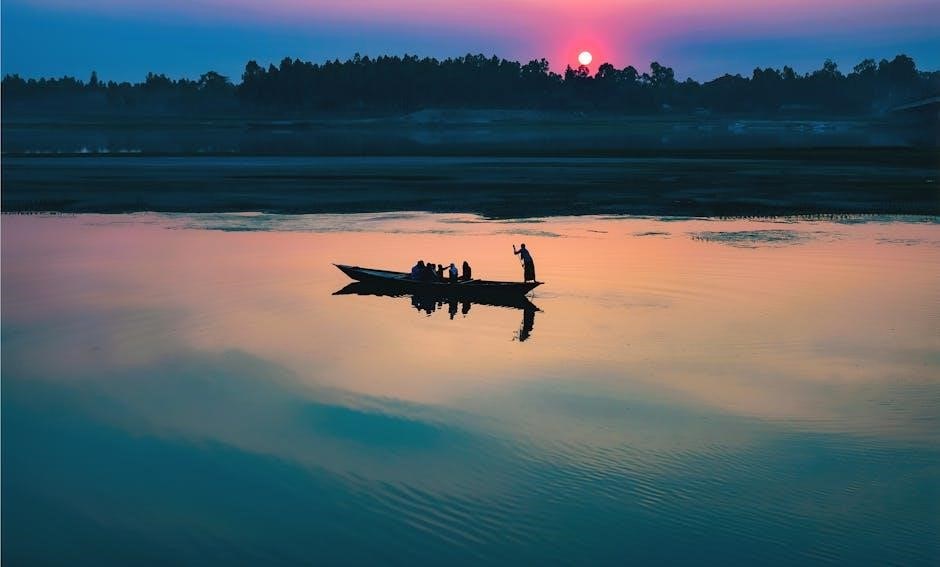
Weather and Water Conditions
Weather and water conditions significantly influence walleye behavior. Fluctuations in water temperature‚ clarity‚ and current affect feeding patterns. Rain‚ wind‚ and seasonal changes also impact fishing success‚ requiring adaptability.
Impact of Water Temperature on Walleye Activity
Water temperature plays a crucial role in walleye activity. During colder months‚ walleye are more active in shallower waters‚ feeding aggressively as they prepare for winter. As temperatures rise‚ they seek deeper‚ cooler areas to avoid stress. In the Columbia River‚ fluctuating water levels and seasonal changes create dynamic conditions‚ influencing walleye behavior and feeding patterns. Understanding these temperature-driven shifts is key to successful fishing‚ as walleye are most active in specific thermal ranges‚ typically between 40°F and 70°F.
Fishing During Different Weather Conditions
Weather conditions significantly influence walleye behavior and fishing success on the Columbia River. Overcast skies and moderate winds often increase walleye activity‚ making them more aggressive. Clear skies and high pressure can reduce daylight feeding‚ pushing walleye to deeper waters. Cold fronts may slow activity‚ while warm fronts can stimulate feeding. Understanding these weather-related patterns helps anglers adapt their strategies‚ such as adjusting depth and presentation. Seasonal weather changes also play a role‚ with walleye exhibiting different behaviors in spring‚ summer‚ and winter‚ making weather awareness a key factor in successful fishing trips.
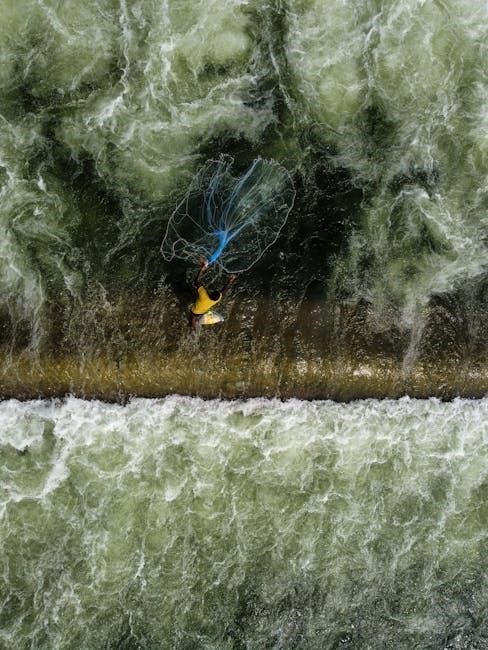
Guided Tours and Charters
Guided tours and charters on the Columbia River offer anglers expert knowledge‚ specialized techniques‚ and access to prime fishing spots. Experienced guides ensure a memorable and productive experience.
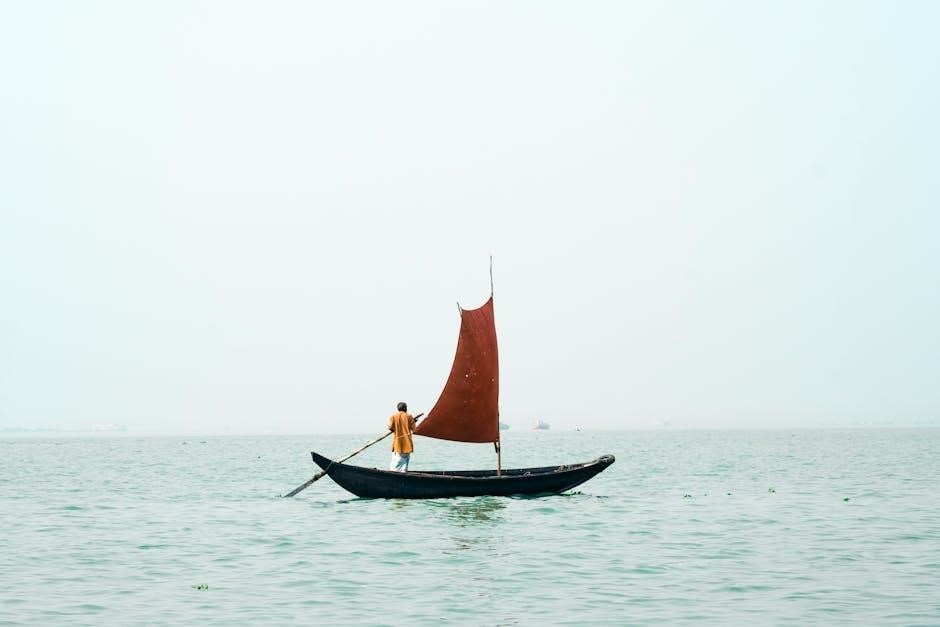
Choosing the Right Fishing Guide
Selecting a knowledgeable fishing guide is crucial for a successful walleye fishing experience on the Columbia River. Look for guides with extensive local expertise and a proven track record of success. Ensure they have experience specifically with walleye‚ as techniques can vary significantly from other species. A reputable guide will provide high-quality equipment‚ share valuable insights‚ and navigate the river’s unique conditions effectively; They should also emphasize sustainable fishing practices and safety. A good guide will enhance your fishing trip‚ helping you make the most of your time on the water.
What to Expect from a Guided Tour
A guided walleye fishing tour on the Columbia River offers a comprehensive and enjoyable experience. Expect expert guidance tailored to your skill level‚ from novice to advanced anglers. Guides provide high-quality equipment‚ share proven techniques‚ and reveal prime fishing locations. They will assist with setting up gear‚ demonstrating effective methods‚ and handling fish. Tours often emphasize sustainable practices and safety. Many guides also offer insights into the river’s ecosystem and walleye behavior‚ enhancing your understanding and appreciation of the fishery. This ensures a memorable and productive fishing adventure.
Cooking and Preparing Walleye
Walleye is a culinary delight‚ known for its mild flavor and flaky texture. Popular cooking methods include baking‚ grilling‚ and frying. Try it in fish tacos for a tasty treat!
Popular Recipes for Walleye
Walleye is a versatile fish that excels in various dishes. A favorite is walleye fish tacos‚ featuring crispy battered fillets‚ fresh slaw‚ and zesty lime. Another popular option is beer-battered fried walleye‚ served with golden fries. For a lighter touch‚ try baking with lemon‚ garlic‚ and herbs or grilling with a blackened seasoning crust. Its mild flavor pairs well with bold seasonings‚ making it a culinary delight. Anglers often celebrate their catch with these mouthwatering recipes‚ savoring the fresh Columbia River walleye.
Best Practices for Cleaning and Preparing Walleye
Proper cleaning and preparation are key to enjoying Columbia River walleye. Start by cleaning the fish immediately after catching to preserve freshness. Remove the bloodline and gills to eliminate any strong flavors. Scale the fish thoroughly and rinse under cold water. For filleting‚ use a sharp knife to ensure clean cuts. Pat dry the fillets before cooking to enhance texture and flavor. Store fresh catches on ice to maintain quality. These steps ensure your walleye is ready for delicious recipes and maintains its signature taste.
Conservation and Sustainability
Conservation efforts are crucial for maintaining healthy Columbia River walleye populations and habitats. Sustainable fishing practices ensure the long-term viability of this iconic species for future generations.
Conservation Efforts for Walleye Populations
Conservation efforts for Columbia River walleye focus on protecting habitats and ensuring sustainable populations. Local authorities monitor fish populations and enforce catch limits to prevent overfishing. Habitat restoration projects aim to preserve spawning grounds and improve water quality. Educational programs encourage anglers to adopt catch-and-release practices and handle fish gently. Collaborative efforts between fisheries managers‚ guides‚ and communities help maintain a balanced ecosystem. These initiatives ensure the long-term health of walleye populations‚ benefiting both the environment and anglers alike.
Practices for Sustainable Fishing
Sustainable fishing practices on the Columbia River involve using biodegradable gear‚ avoiding bycatch‚ and promoting catch-and-release methods. Handling fish gently and avoiding sensitive habitats help preserve ecosystems. Guides emphasize responsible fishing‚ ensuring minimal environmental impact. Adhering to local regulations and respecting seasonal closures further support conservation. These practices not only protect walleye populations but also maintain the river’s biodiversity for future generations. By adopting eco-friendly techniques‚ anglers contribute to the long-term sustainability of the Columbia River’s walleye fishery.
Tips for Beginners
For new anglers‚ start with basic gear‚ focus on patience‚ and learn from experienced guides. Respect local regulations and the environment to ensure a sustainable fishery.

Essential Tips for First-Time Walleye Anglers
For first-time walleye anglers on the Columbia River‚ start by choosing the right gear and understanding basic fishing techniques. Focus on learning river currents and depths‚ as walleye often hide in structured areas. Hiring a guide can provide invaluable insights and improve your chances of success. Be patient‚ as walleye can be elusive‚ and practice proper handling to ensure sustainable fishing practices. Respect local regulations and the environment to preserve the fishery for future anglers. These tips will help you make the most of your fishing experience.
Common Mistakes to Avoid
When fishing for walleye on the Columbia River‚ avoid common mistakes such as using improper tackle or ignoring water conditions. Many anglers overlook the importance of river currents and depths‚ which can significantly impact walleye behavior. Poor knot-tying and improper bait presentation are also frequent errors. Additionally‚ failing to respect local fishing regulations or mishandling fish can harm both the catch and the environment. By addressing these issues‚ anglers can enhance their fishing experience and contribute to sustainable practices on the river.
Catching Trophy Walleye
Catching trophy walleye on the Columbia River requires precision‚ patience‚ and the right techniques. Focus on deep pools and structure‚ using live bait or jigs for success. Timing is key‚ as walleye are most active during low-light conditions. Ensure proper tackle strength to handle larger fish‚ and always follow local regulations to promote sustainable fishing practices and protect trophy-sized walleye populations for future anglers.
Strategies for Landing Trophy Walleye
Pursuing trophy walleye on the Columbia River demands strategic approaches. Effective methods include trolling with bottom bouncers and worm harnesses‚ or jigging in deep pools and structural elements. Timing is crucial‚ with peak activity during early morning or late evening. Guides recommend using 6-8 lb test line and size 2 to 4 hooks to handle larger fish. Patience and precise presentation are key to enticing trophy walleye. Always handle and release large fish gently to ensure their survival and maintain the river’s walleye population for future anglers.
Handling and Releasing Large Walleye
Handling large walleye requires care to ensure their survival and maintain the Columbia River’s ecosystem. Use barbless hooks to minimize injury and wet your hands before handling to prevent removing their protective slime layer. Support the fish’s body and avoid touching the gills or eyes. For release‚ hold the walleye gently in the water‚ facing upstream‚ until it regains strength and swims away. This method promotes sustainable fishing practices and helps preserve trophy walleye populations for future anglers.
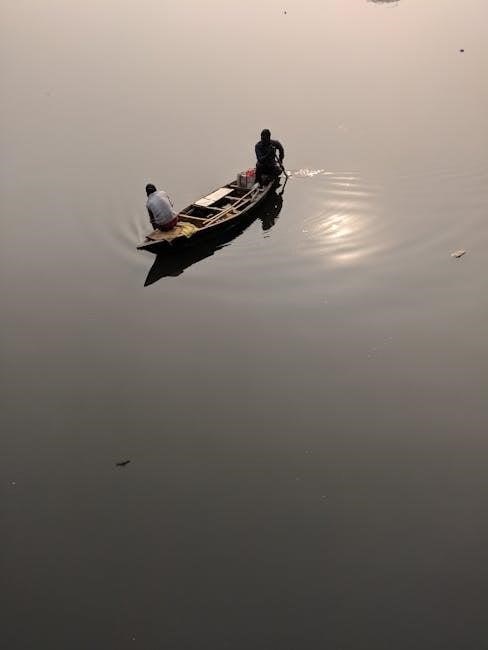
Night Fishing for Walleye
Night fishing for walleye on the Columbia River is a popular and productive method‚ as walleye are often more active under dark skies. Anglers use glow-in-the-dark lures or specialized presentations to attract these elusive fish‚ making the experience both exciting and rewarding. The calmness of the night can enhance the fishing experience‚ allowing for precise casting and a higher chance of landing trophy walleye. Many guides recommend night fishing for those seeking a unique challenge and memorable catches.
Techniques for Successful Night Fishing
Night fishing for walleye on the Columbia River demands specific techniques to maximize success. Anglers often use glow-in-the-dark lures or brightly colored jigs to attract walleye in low-light conditions. Slow trolling near structural elements like rocks or weed beds is highly effective‚ as walleye tend to move shallower at night. Bottom bouncers with live bait or spinner rigs can also yield impressive results. Additionally‚ focusing on areas near drop-offs or submerged humps where walleye congregate can increase your chances of landing a trophy. Patience and precise presentation are key to nighttime walleye success.
- Use glow-in-the-dark lures or bright jigs.
- Slow troll near structural elements.
- Employ bottom bouncers with live bait.
- Target drop-offs and submerged humps.
Best Locations for Night Fishing
Night fishing for walleye on the Columbia River is most productive near structural elements and drop-offs. Key locations include the Bonneville Dam area‚ where walleye congregate in deep pools‚ and the John Day Dam‚ known for its rocky shores; Submerged humps and weed beds near the mouth of tributaries also attract walleye at night. These spots provide ideal ambush points for walleye‚ making them prime targets during evening hours. Glow-in-the-dark lures and slow presentations are particularly effective in these areas.
- Bonneville Dam area and its deep pools.
- John Day Dam’s rocky shoreline.
- Submerged humps near tributary mouths.
- Weed beds and structural drop-offs.
Fishing with Family
Fishing with family on the Columbia River creates lasting memories. The river offers family-friendly spots with accessible shorelines and gentle currents‚ perfect for all skill levels.
- Shorelines with easy access for children.
- Gentle currents suitable for family fishing.
- Opportunities to engage kids in fishing activities.
Family-Friendly Fishing Spots
The Columbia River offers numerous family-friendly fishing spots‚ ideal for anglers of all ages. Sandy shorelines and shallow waters provide safe environments for children to fish. Many parks along the river feature picnic areas and playgrounds‚ making it easy to combine fishing with family recreation. Gentle currents and accessible fishing piers ensure a stress-free experience for kids. These spots are perfect for teaching young anglers the basics of walleye fishing while creating memorable family moments.
- Shallow waters for safe fishing with children.
- Parks with picnic areas and playgrounds nearby.
- Accessible fishing piers for all skill levels.
Engaging Children in Walleye Fishing
Engaging children in walleye fishing can create lifelong memories and a passion for the sport. Simple‚ kid-friendly gear and hands-on activities make fishing accessible and fun. Guides often offer tips tailored for young anglers‚ ensuring they feel involved and excited. Teaching children about the river’s ecosystem and the importance of conservation can also deepen their appreciation for fishing.
- Use kid-friendly rods and reels for ease of handling.
- Teach basic fishing skills through interactive demonstrations.
- Incorporate nature walks and wildlife spotting to enhance the experience;
Columbia River walleye fishing offers an unforgettable experience‚ with expert guides ensuring memorable trips. Plan your next adventure to explore its abundant waters and reel in success!
Final Thoughts on Columbia River Walleye Fishing
The Columbia River remains a premier destination for walleye fishing‚ offering abundant waters and trophy-sized catches. With expert guides‚ anglers can maximize their experience‚ combining local knowledge with proven techniques. The river’s diverse habitats and seasonal variations ensure year-round opportunities‚ making it a paradise for both novice and experienced anglers. Whether you’re seeking a thrilling fight or a memorable dining experience‚ the Columbia River delivers. Plan your next trip to explore its waters and create lasting fishing memories.
Encouragement to Plan Your Next Fishing Trip
The Columbia River offers an exceptional walleye fishing experience‚ making it a must-visit destination for anglers. With expert guides‚ you’ll gain insider knowledge and techniques to maximize your catch. The river’s productivity and scenic beauty create a memorable adventure. Don’t miss the chance to reel in trophy walleye and enjoy the thrill of fishing in one of the Pacific Northwest’s most iconic waterways. Start planning your trip today and get ready to create lifelong fishing memories on the Columbia River!
